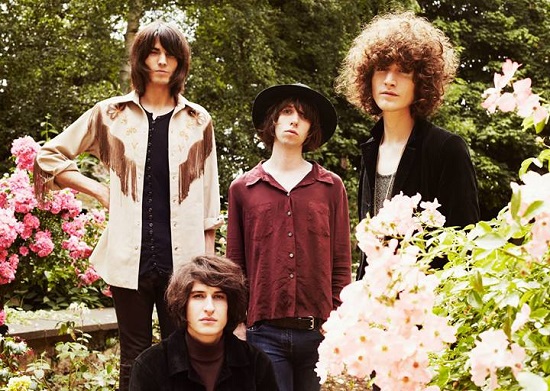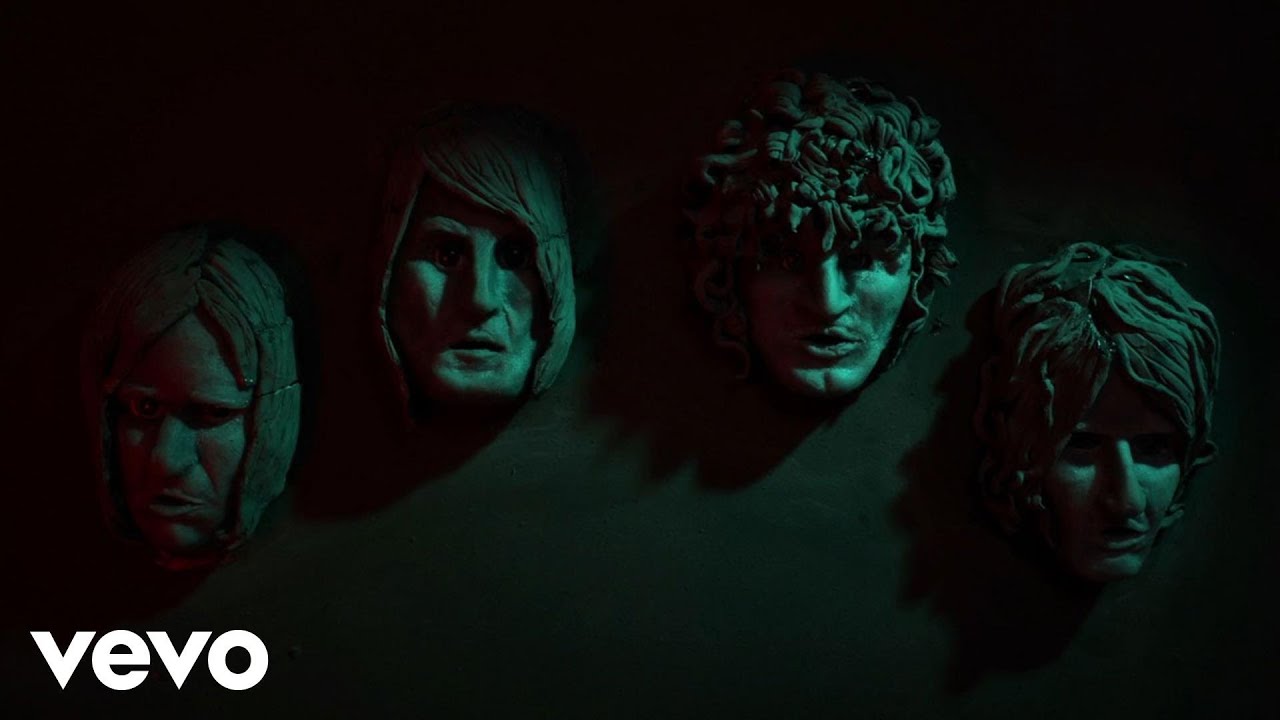Temples’ debut album Sun Structures arrives following the huge acclaim they received for a string of excellent singles last year. Explicitly weaving together ‘60s psych and soul, ‘70s glam and motorik and a hint of Madchester baggy, Sun Structures is a triumph: a hugely assured album which reveres its influences without being smothered by them. There’s an ethereal, otherworldly feeling to songs like ‘Sand Dance’ and ‘The Golden Throne’, yet the album is still grounded by the propulsive fuzz of blues and classic rock. Singer and guitarist James Bagshaw opened his third eye to the Quietus.
Congratulations on Sun Structures – it’s excellent. It spans a very wide range of influences but it’s wonderfully cohesive.
James Bagshaw: Thank you very much, that’s very kind of you.
The Quietus last caught up with you in the summer – your keyboardist Adam was having some problems ironing a silk shirt. Have your garment care protocols improved at all?
JB: There’s been a shortage of garments. I’m very particular about what I like – I’m always on the search for new stuff to wear, but I never actually get round to buying it. It takes me ages to find anything. I don’t go high street shopping; instead of a pub crawl, we go on a charity shop crawl. Find some old blouses from a deceased widower, put them in the wash – always put them in the wash – and see what they’re like.
Are the versions of the previously available songs ‘Shelter Song’ and ‘Colours To Life’ different on the album? Did you re-master them or re-do them for the new release?
JB: The singles might be shorter – these are the full-length album versions of the tracks. It’s all from the same sessions – I think the version of ‘Colours To Life’ on the album is longer than the single.
You recorded and produced Sun Structures yourselves in your home studio, as you did with the previous singles you’ve put out. You’re trying to balance the artistic freedom of recording at home with its limitations on gear and equipment…
JB: There aren’t limitations, to us, from a recording viewpoint when you’re working at home. Mixing is a different world, mixing it to work through everyone’s speakers, but I feel like – we’ve got some good gear; if you haven’t got a way of getting a certain sound you put it through what you do have, you put it through the blender, so to speak. The whole album’s recorded on a £75 microphone. There aren’t any tricks there!
Claudius Mittendorfer mixed most of the songs. What did he bring to the album?
JB: He mixed ten of the songs on the record. He did a mix of ‘Colours To Life’ and we really got on; he really understood how we wanted stuff to be mixed, and he knew how to bring out the elements that were so important to us – bringing them all to life. We couldn’t do at that home, not having all the really great outboard to put stuff through, compressors and that kind of thing.
Everything sounds very live on the record, but in interviews you’ve also mentioned using electronic drums – maybe as a concession to your neighbours if you’re recording late at night. But I didn’t hear any drums on Sun Structures that sounded obviously electronic.
JB: On ‘Mesmerise’, there’s an electronic snare and kick on the verses. When it comes into the next bit, the real kick drum comes in. There are also two loops we made which carry on throughout the whole track. We’re not gonna have Kraftwerk kind of electronic drums, but what we want to do is cut up our own samples – I guess you could call that electronic to an extent.
The loops are integrated really well.
JB: It’s that 90s mentality, but another way of doing it, in a similar way that Primal Scream would cut up a loop and make something out of. Then we’ve got very brash guitars which you couldn’t ever sample; we like to mix both worlds. I do think it sounds like a live record.
On ‘Move With The Seasons’ and ‘The Guesser’, there’s some filtering – the only sounds on the album which don’t sound completely like they came from the mid-60s. That’s not a criticism: it sounds superb.
JB: It’s playing on people like Todd Rundgren, people using phasers on records – but we wanted to do it tastefully. If you put that on every track it would sound brilliant, but then you’ll lose the emphasis. So we chose when to use it – using modern technology to hark back to what we love.
It’s interesting that you’ve talked about being huge fans of producers, like Jack Nitzsche and Tony Visconti, yet you produce your own stuff.
JB: Nitzsche was as important and as inventive as Spector, just less of a show-off. He’s not as well noted. We love the sound he used to make – it’s a lost art these days. Everyone is trying to copy the big producer of the day, whoever that may be, but we like producers who push boundaries: Joe Meek, Visconti, Nitzsche, Joe Boyd. People who wanted to bring songs to different places using the same equipment everyone else had.
How much of what the best producers bring is because they’re outside the band, do you think?
JB: A lot of people go to producers because they have songs sitting there and they don’t know how they need to be portrayed. We knew exactly how we wanted to portray the songs so there was no need to get in a producer. I had our set-up at home: I’ve been recording for a few years, just listening to records and dissecting how they’re made. I wasn’t going to audio engineering classes! It’s the purest way, when you’ve got a vision for how it’s going to sound. There hasn’t been a single compromise on this record. We thought that was unheard of – releasing a full album to the world, you’d expect to make compromises, but we’re on a great record label which trusts our judgement. We’re very proud of the album.
I think ‘Keep In The Dark’ is my favourite song so far. It has a real Bolan sound to it. There’s a guitar that sounds almost like a trumpet.
JB: Yeah, it’s not a horn or anything – it’s in the vein of a horn, but we don’t need to do that. We’re limited by what we have so we use that to make the sounds we want. We just whacked it through a few different things. It’s fun to play that one live.
How have the live shows been going?
JB: Really well. We’ve got our own tour, then we’ll be doing the NME tour, then we’re going all around: Europe, America, Japan, Australia. That’ll take us through to festival season. It’s very surreal. Turning up to the Empty Bottle in Chicago or the Bowery Ballroom in New York, and all these people are coming to see you. Every single gig was busy, and you think: how the hell do people know who we are? That’s the transcending nature of music. It’s a very beautiful thing.
Sun Structures is out now via Heavenly Recordings. Temples play Field Day on June 8; for full details and tickets, head to the festival’s website



